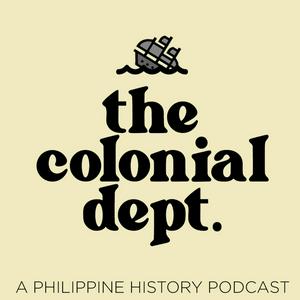Coffee. Tea. Cocoa. The three have a surprisingly rich, complex, and layered history in the Philippines. How did they arrive here, and what effect did they have in the archipelago’s colonial period?Follow us on IG: @thecolonialdeptFollow us on TikTok: @thecolonialdeptEmail us:
[email protected] to Beach Reads Book Club (based in The Beach House cafe in Kapitolyo) for hosting the live premiere of this episode last July 5. References:Acabado, Stephen (4 May 2025). “[Time Trowel] A drunk history of the Philippines.” Rappler. https://www.rappler.com/voices/thought-leaders/time-trowel-drunk-history-philippines/Edgar, Blake (2010). “The Power of Chocolate.” Archaeology, 63(6), pp. 20-25. https://www.jstor.org/stable/41780626Doeppers, Daniel (2016). Feeding Manila in Peace and War, 1850-1945. Ateneo de Manila University Press.Topik, Steven (2003). The World Coffee Market in the Eighteenth and Nineteenth Centuries, from Colonial to National Regimes. GEHN Conference, Bankside, London.Sonnad, Nikhil (11 January 2018). “Tea if by sea, cha if by land: Why the world only has two words for tea.” Vox.Chia, Lucille (2006). “The Butcher, the Baker, and the Carpenter: Chinese Sojourners in the Spanish Philippines and Their Impact on Southern Fujian (Sixteenth-Eighteenth Centuries).” Journal of the Economic and Social History of the Orient, 49(4), pp. 509-534.Lanzona, Claudine (2019). “The Search Party.” Grid. “Cocoa (cacao).” (n.d.) Plant Village. https://plantvillage.psu.edu/topics/cocoa-cacao/infosCrawford, John (1852). “History of Coffee.” Journal of the Statistical Society of London, 15(1), pp. 50-58.


